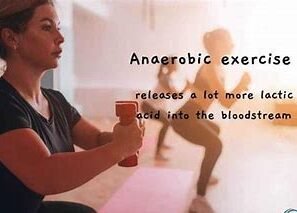High-Intensity Interval Training (HIIT) has been shown to have significant benefits for cardiovascular health. By alternating between short bursts of intense activity and periods of lower-intensity recovery or rest, HIIT challenges the heart and improves its efficiency over time.

1. Improved Heart Function
HIIT has been linked to an increase in heart rate variability (HRV), which is a positive marker of cardiovascular fitness. HRV indicates how well the heart can adjust to various stressors, and a higher HRV is associated with a lower risk of heart disease. HIIT improves both aerobic and anaerobic capacity, enhancing overall heart health.
2. Lower Blood Pressure
Regular HIIT can lead to reductions in systolic and diastolic blood pressure, particularly in individuals with hypertension. The intense bursts of activity help improve the function of the endothelium (the lining of the blood vessels), which can lead to better blood flow and lower resistance in the arteries.
3. Increased Cardiovascular Efficiency
HIIT improves the heart’s ability to pump blood efficiently, enhancing the delivery of oxygen and nutrients to muscles and tissues. This can lead to improved endurance and overall cardiovascular performance during everyday activities, reducing the strain on the heart.
4. Reduction in Resting Heart Rate
Over time, consistent HIIT can lower the resting heart rate. As the heart becomes more efficient, it needs to beat fewer times per minute at rest to deliver the same amount of blood, which is a key sign of a healthier cardiovascular system.
5. Fat Loss and Decreased Cholesterol
HIIT is effective for burning calories and promoting fat loss, which has a direct impact on heart health. Lower body fat levels help reduce the risk of cardiovascular disease. HIIT also helps improve lipid profiles by reducing LDL (bad cholesterol) and increasing HDL (good cholesterol) levels.
6. Enhanced Vascular Health
The alternating intensity of HIIT can promote better vascular function. It encourages blood vessels to expand and contract more efficiently, which can reduce stiffness and improve blood flow. This leads to better delivery of oxygen and nutrients throughout the body and helps prevent cardiovascular diseases.
7. Reduction in Inflammation
Chronic low-grade inflammation is a contributing factor to heart disease. HIIT has been shown to reduce markers of inflammation in the body, helping to lower the risk of developing conditions like atherosclerosis and other cardiovascular issues.
8. Prevention of Heart Disease and Stroke
Studies have suggested that regular participation in HIIT can reduce the risk of developing heart disease, stroke, and other cardiovascular conditions. The combination of improved heart function, blood pressure regulation, and fat loss creates a protective effect on the cardiovascular system.
Considerations:
- While HIIT is generally safe for most people, individuals with existing cardiovascular conditions should consult a healthcare provider before starting a HIIT program.
- It’s important to perform HIIT with proper form and appropriate intensity to avoid overtraining or injury.
